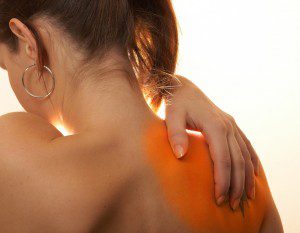Contributing Writer for Wake Up World
The bane of health, chronic inflammation, is at the root of most disease. Cancer, rheumatoid arthritis, obesity, Alzheimer’s, Parkinson’s, cardiovascular troubles and periodontal issues are all influenced by an overactive inflammatory response.
Fortunately, we have a powerful ally against inflammation residing in our kitchen. Through select foods and dietary adjustments, we can subdue this unruly beast and create a solid foundation for a healthy future.
The Primary Culprit: Poor Food Choices
Inflammation is the body’s natural response to injury, helping to heal damage throughout the system. And yet, this mechanism can lead to serious illness when left unchecked.
Dietary choices are the number one trigger for an exaggerated inflammatory reaction – especially sugary, high-glycemic and processed carbohydrates. Poor-quality fats like those found in meat and dairy, as well as trans fats in refined vegetable oils, are also problematic.
In the scholarly paper “Control of Systemic Inflammation and Chronic Diseases – The Use of Turmeric and Curcuminoids”, researcher Stig Bengmark observes:
“The world suffers an epidemic of both critical illness (CI) and chronic diseases (ChDs), and both groups of diseases increase from year to year, and have done so for several decades. It is strongly associated to the modern, so-called Western, lifestyle: stress, lack of exercise, abuse of tobacco and alcohol, and the transition from natural unprocessed foods to processed, calorie-condensed, and heat-treated foods.
“There is a strong association between reduced intake of plant fibers and plant antioxidants and increased consumption of industrially produced and processed products especially dairy, refined sugars, and starch products and ChDs. Heating up foods such as milk (pasteurization) and production and storage of milk powder produce large amounts of advanced glycation end products (AGEs) and advanced lipid oxidation end products (ALEs), known as potent inducers of inflammation.”
Be that as it may, just as the diet can exacerbate inflammation, specific foods can also heal it.
Edible solutions
A number of foods offer exceptional protection against inflammatory reactions. For instance, sulfur compounds found in garlic, and polyphenol antioxidants in green tea, both successfully discourage excessive inflammation. [1][2]
Golden-hued turmeric is another example. In laboratory tests, the anti-inflammatory characteristics of turmeric are effective in mitigating skin, lung and neurodegenerative disorders, cancer, heart disease, diabetes, osteoporosis, cataracts and intestinal diseases. [3]
Healthy fats are also important. As an outstanding source of omega-3 fatty acids, sardines, fish oil supplements and wild-caught salmon, or vegetarian options like hemp seed, flaxseed and walnuts, provide the building blocks for healthy inflammation levels. [4][5][6] Moreover, oleic acid in olive oil supplies a good measure of anti-inflammatory omega-9 fatty acids. [7]
Don’t forget to add a bit of spice to your life. Over 25 years of research on ginger has established the herb as one of the foremost anti-inflammatory foods around. A study in the Journal of Medicinal Food discovered that two ginger extracts, Zingiber officinale and Alpina galanga, inhibit several genes responsible for inflammatory reactions. [8]
And Karen Lamphere, MS, CN, recommends a dash of heat. “Some of the most potent anti-inflammatory vegetables are peppers and the spices derived from them, such as cayenne pepper. All chili peppers include capsaicin (the hotter the pepper, the more capsaicin it has), which is a potent inhibitor of substance P, a neuropeptide associated with inflammatory processes.”
Over and above dietary choices, lifestyle options such as reducing stress, detoxifying and exercising regularly contribute to lower inflammation levels too. In the end, sidestepping the risks of this silent killer is a straightforward daily task when armed with whole foods and healthy habits.
Related reading:
Sources:
1. “Anti-inflammatory activity of sulfur-containing compounds from garlic” Lee da Y, Li H, Lim HJ, Lee HJ, Jeon R, Ryu JH. J Med Food. 2012 Nov;15(11):992-9. doi: 10.1089/jmf.2012.2275. Epub 2012 Oct 11. Retrieved on December 3, 2013 from: http://www.ncbi.nlm.nih.gov
2. “Green Tea Polyphenols Block Endotoxin-Induced Tumor Necrosis Factor-Production and Lethality in a Murine Model” Fajun Yang, Willem J.S. de Villiers, Craig J. McClain, and Gary W. Varilek. The Journal of Nutrition. Retrieved on December 3, 2013 from: http://jn.nutrition.org
3. “Control of Systemic Inflammation and Chronic Diseases – The Use of Turmeric and Curcuminoids” Stig Bengmark. Nutrigenomics and Proteonomics in Health and Disease, 2009. Retrieved on December 3, 2013, from: http://konsument-forum.se
4. “Dietary fish oil n 3 fatty acids increase regulatory cytokine production and exert anti inflammatory effects in two murine models of inflammation” Sierra, Saleta;Lara-Villoslada, Federico;Comalada, Monica;Olivares, Monica;Xaus, Jordi. Lipids, 2006. Retrieved on December 3, 2013 from: http://science.naturalnews.com
5. “The Composition of Hemp Seed Oil and Its Potential as an Important Source of Nutrition” Cary Leizer, David Ribnicky, Alexander Poulev, Slavik Dushenkov, Ilya Raskin. Journal of Nutraceuticals, Functional & Medical Foods, 2000. Retrieved on December 3, 2013 from: http://www.davoil.ro
6. “Dietary flaxseed inhibits atherosclerosis in the LDL receptor-deficient mouse in part through antiproliferative and anti-inflammatory actions” Chantal M. C. Dupasquier , Elena Dibrov , Annette L. Kneesh , Paul K. M. Cheung , Kaitlin G. Y. Lee , Helen K. Alexander , Behzad K. Yeganeh , Mohammed H. Moghadasian , Grant N. Pierce. American Journal of Physiology – Heart and Circulatory Physiology. Published 1 October 2007 Vol. 293no. H2394-H2402. Retrieved on December 3, 2013 from: http://ajpheart.physiology.org
7. “Phytochemistry: Ibuprofen-like activity in extra-virgin olive oil” Gary K. Beauchamp, Russell S. J. Keast, Diane Morel, Jianming Lin, Jana Pika, Qiang Han, Chi-Ho Lee, Amos B. Smith, & Paul A. S. Breslin. Nature 437, 45-46 (1 September 2005) | doi:10.1038/437045a. Retrieved on December 3, 2013 from: http://www.nature.com
8. “Ginger – An Herbal Medicinal Product with Broad Anti-Inflammatory Actions” Reinhard Grzanna, Lars Lindmark, and Carmelita G. Frondoza. Journal of Medicinal Food. Summer 2005. Retrieved on December 3, 2013 from: http://online.liebertpub.com
Updated October 2014
Previous articles by Carolanne:
- Hemp – The Ultimate Cash Crop, Health Food and Environmental Savior Rolled Into One
- Confirmed by Science: You Really Can Change Your DNA – Here’s How
-
Chemtrails: Learn How to Protect Yourself From These Treacherous Poisons
- Four Specialty Salts That Can Change Your Health For The Better
- Kick the Caffeine Habit and Feel Better Quick with these Natural Alternatives
-
Yet Another Reason to go Organic – Research Verifies it Really is More Nutritious
- Top 10 Food Frauds: Formaldehyde, Plastic, Melamine & Caustic Soda Found in Common Foods
- Autistic Boy With Higher IQ Than Einstein Discovers Gift After Removal From State-Run Therapy
-
Enhance Spiritual, Mental and Physical Well-being with a Pineal Gland Detox
- Live Your Bliss by Boosting Brain Dopamine Levels
About the author:
I’m Carolanne — a writer, chef, traveler and enthusiastic advocate for sustainability, organics and joyful living. It’s good to have you here. If you would like to learn more, connect with me at Thrive-Living.net or visit Twitter.com/Thrive_Living.Please note: this article was first published on Natural News.

If you've ever found value in our articles, we'd greatly appreciate your support by purchasing Mindful Meditation Techniques for Kids - A Practical Guide for Adults to Empower Kids with the Gift of Inner Peace and Resilience for Life.
In the spirit of mindfulness, we encourage you to choose the paperback version. Delve into its pages away from screen glare and notifications, allowing yourself to fully immerse in the transformative practices within. The physical book enriches the learning process and serves as a tangible commitment to mindfulness, easily shared among family and friends.
Over the past few years, Wake Up World has faced significant online censorship, impacting our financial ability to stay online. Instead of soliciting donations, we're exploring win-win solutions with our readers to remain financially viable. Moving into book publishing, we hope to secure ongoing funds to continue our mission. With over 8,500 articles published in the past 13 years, we are committed to keeping our content free and accessible to everyone, without resorting to a paywall.








